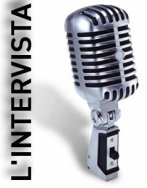FRENCH BULLDOG (Bouledogue français)
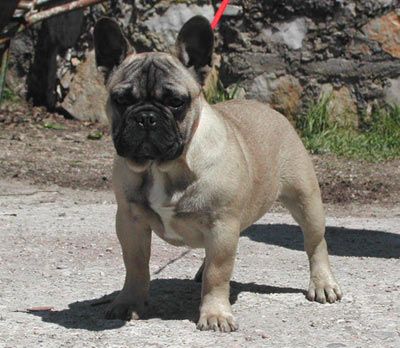
All the wonderful subjects in the photos are of the breeding AELGIFUR
FCI-Standard N° 101 / 06. 04. 1998 / GB
TRANSLATION : Mrs Peggy Davis.
ORIGIN : France.
DATE OF PUBLICATION OF THE ORIGINAL VALID STANDARD : 28.04.1995.
UTILIZATION : Companion, watch dog, pleasure dog.
CLASSIFICATION F.C.I. : Group 9 Companion and Toy Dogs.
Section 11 Small Molossian Dogs.
Without working trial.
BRIEF HISTORICAL SUMMARY : Probably issued, like all the mastiffs, from the Epirus and the Roman Empire molosses, relative of the Bulldog of Great Britain, the Alans (tribe of the Middle Age), the mastiffs and small type mastiffs of France, the bulldog we know is the product of different crossings done by enthusiastic breeders in the popular quarters of Paris in the years 1880.
During that period, the Bulldog being a dog belonging to butchers and coachmen of « les Halles » (market place), he soon knew how to conquer the high society and the artistic world by his particular appearance and character. He then rapidly propagated himself.
The first breed club was founded in 1880 in Paris. The first registration dates from 1885 and the first standard was established in 1898, year in which the « Société Centrale Canine » of France recognized the breed of the French Bulldog. The first shown dog was from 1887. The standard, modified in 1931, 1932 and 1948, was reformulated in 1986 by H.F. Reant and R. Triquet (F.C.I. publication 1987), then in 1994 by the committee of the Club of the French Bulldog with the collaboration of R. Triquet.
SUGGESTED BREEDINGS by MENANDPETS.COM:
No breeding to signal
if you want to know like signaling yours, contacts: marketing@inseparabile.it
GENERAL APPEARANCE : Typically a small size molossian. Powerful dog for its small size, short, compact in all its proportions, smooth-coated, with a short face, a snub nose, erect ears and a naturally short tail. Must have the appearance of an active animal, intelligent, very muscular, of a compact build with a solid bone structure.
BEHAVIOUR / CHARACTER : Sociable, lively, playful, sporty, keen. Particularly affectionate towards his masters and the children.
HEAD : The head must be very strong, broad and square, the skin of the head forming almost symmetrical folds and wrinkles. The head of the bulldog is characterized by a contraction of the maxillary-nasal part; the skull has taken up in width that which it has lost in length.
CRANIAL REGION :
Skull : Broad, almost flat, forehead very bulging. Superciliary arches prominent, separated by a particularly developed furrow between the eyes. The furrow must not extend onto the forehead. Occipital crest is hardly developed.
Stop : Deeply accentuated.
FACIAL REGION :
Nose : Broad, very short, turned up, nostrils well open and symmetrical, slanting towards the rear. The inclination of the nostrils as well as the snub nose (i.e. upturned) must, however, allow a normal nasal breathing.
Muzzle : Very short, broad, with concentric symmetrical folds coming down on the upper lips (length of muzzle about 1/6 of the total length of the head).
Lips : Thick, a little loose and black. The upper lip rejoins the lower lip at its middle, completely covering the teeth which should never be visible. The profile of the upper lip is descending and rounded. Tongue must never show.
Jaws : Broad, square, powerful. Lower jaw shows a broad curve, terminating in front of the upper jaw. The mouth being closed, the prominence of the lower jaw (prognathism-undershot) is moderated by the curve of the lower mandibular branches. This curve is necessary to avoid a too important shifting of the lower jaw.
Teeth : The lower incisors must never be GO BACK TO LIST the upper incisors in any case. The arch of the lower incisors is rounded. The jaw must not show lateral deviation, nor torsion. The disposition of the incisoral arches should not be strictly delimited, the essential condition being that the upper and the lower lips rejoin to completely cover the teeth.
Cheeks : The muscles of the cheeks are well developed, but not prominent.
Eyes : Lively expression, set low, quite far from the nose and especially from the ears, dark coloured, quite big, well round, slightly protruding, showing no trace of white (sclera) when the dog is looking straight ahead. Rims of eyelids must be black.
Ears : Medium size, wide at the base and rounded at the top. Set high on the head, but not too close together, carried erect. The orifice is open towards the front. The skin must be fine and soft to the touch.
NECK : Short, slightly arched, without dewlap.
BODY :
Topline : Rising progressively at loin level to slope rapidly towards the tail. This conformation which must be sought after, is the consequence of the short loin.
Back : Broad and muscular.
Loin : Short and broad.
Rump : Oblique.
Chest : Cylindrical and well let down; ribcage barrel shaped, very rounded.
Forechest : Wide.
Belly and flanks : Drawn up without excessive tuck up.
TAIL : Short, set low on the rump, close to the buttocks, thick at the base, knotted or kinked naturally and tapering at the tip. Even in action, must stay below the horizontal. A relatively long tail (not reaching beyond the point of the hocks), kinked and tapering is admissible, but not desirable.
LIMBS
FOREQUARTERS : Forelegs vertical and parallel seen in profile and from the front, standing well separated.
Shoulder : Short, thick, with a firm and visible musculature.
Upperarm : Short.
Elbows : Close to the body.
Forearm : Short, straight and muscular.
Pastern joint - Pastern : Solid and short.
HINDQUARTERS : Strong and muscular, hindlegs a little longer than the forelegs, thus raising the hindquarters. The legs are vertical and parallel as seen both in profile and from GO BACK TO LIST.
Thigh : Muscled, firm without being too rounded.
Hock joint : Quite well let down, neither too angulated nor certainly too straight.
Hock : Solid and short. The French Bulldog should be born without dewclaws.
FEET :
Forefeet round of small dimension, i.e. « cat feet », well set on the ground, turning slightly outward. The toes are compact, nails short, thick and well separated. The pads are hard, thick and black. In the brindle subjects, the nails must be black. In the pieds (caille = brindled fawns with medium white patching) and fawn subjects, dark nails are preferred, without however penalising the light coloured nails.
Hindfeet well compact.
GAIT / MOVEMENT : Free movement, the legs moving parallel to the median plane of the body.
COAT
HAIR : Beautiful smooth coat, close, glossy and soft.
COLOUR :
- Uniformly fawn, brindled or not, or with limited patching (pied).
- Fawn brindled or not, with medium or predominant patching.
All the fawn shades are admitted, from the red to light brown (café au lait) colour. The entirely white dogs are classified in « brindled fawn with predominant white patching ». When a dog has a very dark nose, dark eyes with dark eyelids, certain depigmentations of the face may exceptionally be tolerated in very beautiful subjects.
SIZE AND WEIGHT : The weight must not be below 8 kg nor over 14 kg for a bulldog in good condition, size being in proportion with the weight.
FAULTS : Any departure from the foregoing points should be considered a fault and the seriousness with which the fault should be regarded should be in exact proportion to its degree.
- Nose tightly closed or pinched and chronic snorers.
- Lips not joining in the front.
- Depigmentation of the lips.
- Light eyes.
- Dewlap.
- Tail carried high, or too long or abnormally short.
- Loose elbows.
- Straight hock or placed forward.
- Incorrect movement.
- Coat (hair) too long.
- Speckled coat.
SERIOUS FAULTS :
- Incisors visible when mouth closed.
- Tongue visible when mouth closed.
- Stiff beating movement of the forelegs.
- Pink spots on the face, except in the case of brindled fawns with medium white patching (« caille ») and fawns with limited or predominant white patching. (« fauve »).
- Excessive or insufficient weight.
DISQUALIFICATIONS :
- Aggressive or overly shy.
- Colour of nose other than black.
- Hare lip.
- Dog with lower incisors articulating GO BACK TO LIST upper incisors.
- Dog with permanently visible canines, mouth being closed.
- Eyes of two different colours (heterochromatic).
- Ears not carried erect.
- Mutilation of ears, tail or dewclaws.
- Taillessness.
- Dewclaws on hindquarters.
- Colour of coat black and tan, mouse grey, brown.
Any dog clearly showing physical or behavioural abnormalities shall be disqualified.
N.B. : Male animals should have two apparently normal testicles fully descended into the scrotum.
Automatic translate from Inseparabile.com
The history
From the rather foggy past. One of the innumerevoli versions sees it like descendant of the molossi, large small and. that they accompanied the butchers and vendors of meat all.ingrosso of Paris. The opinions on the role eventually carried out from the English Bulldog in its selection are disagree.
Probably there were various crossings to its origin between several the present molossoidi to the times to Paris, from the Bull dog to the Bull Terrier. Sure, i. Between 1900 and the 1926 the period of the race is situated: the French Bouledogue divent one of the devout dogs from company searches to you. The Parisians made of he lookout-posts of the salotti "chic", but after the Liberation, its reigns were lose weight to you clearly. Only all.inizio of years Eighty been able to record a new takeoff of the race.
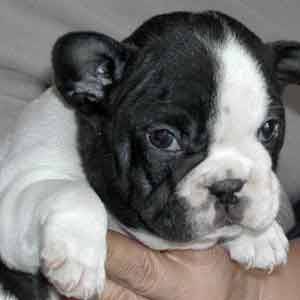
In
detail
Massive dog in its small ransom. brevilineo, of proportions collections, covered of rendered hair, its straight head extension a crushed and short snout, orecchie whose shape remembers those of a bat, and the naturally short tail. It must have the aspect of an active dog. intelligent, much muscoloso, of compact structure and particularly solid skeleton. famous above all like dog from company, even if it knows to be an optimal guardiano small. particularly affectionate with the family and d test of large placidit in the comparisons of the strangers.
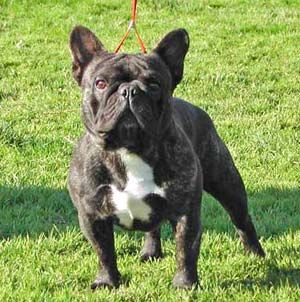
The head must be strong, wide and square: the skin that covers it shape nearly symmetrical folds and wrinkles. The tartufo wide. much short and rincagnato. The short nasal cane much, wide one, and introduce symmetrical folds concentricamente, that they come down on the labbra advanced. The jaws are wide, square and powerful, the stop clearly pronounced, the nearly flat skull, the forehead much bombata. The orecchie are of medium largeness, wide to the base and rounded off
all.estremit the body introduces chest leggermente open, cylindrical thorax and oblique rump. The limbs are strong and muscolosi.
Characteristics
Ransom: the weight does not have to be inferior to 8 kilograms of advanced to 14. The ransom must always proporzionata to the weight.
Colors: tigrato, white man and tigrato (said caille).
Tail: short, attacked low on the rump, supporter with also, the thick one to knotted or crushed by nature and sharpenned the base, in tip: it must remain to of over dell.orizzontale when the dog in motion.
To avoid
. . Eyes of various color
. . Tartufo of various color from the black one
. . I recorded to you inferior articulates to you GO BACK TO LIST those advanced ones
. . Orecchie not erected
. . Mutilation of the orecchie, the tail or the spurs
. . Spurs to the posterior limbs
. . Cape of black, black color and focato, caffelatte, gray rat, brown
. . Criptorchidismo, monorchidismo
. . Anurismo
RACE DEMANDED FROM MARIO M.(BO)
STANDARD OF THE FRENCH BOULEDOGUE
Standard the ICF n. 101/b
The bouledogue French it belongs to group 9, dogs from company, molossoidi of small ransom.
General aspect
Powerful dog in its small ransom, brevilineo, compact in all its proportions, with shaved hair, short and crushed snout, straight orecchie, naturally short tail. . Deve apparire reattivo, intelligente, molto muscoloso, dalla struttura compatta e dall'ossatura solida.
Behavior
. Piacevole cane da compagnia, da guardia. . Particolarmente affettuoso con i suoi padroni e i bambini.
RANSOM And WEIGHT
. II peso non deve essere inferiore agli 8 kg e non superiore ai 14. . La taglia deve essere proporzionata al peso.
sailing point
. I movimenti sono sciolti. . Gli arti si spostano parallelamente al piano mediano del corpo.
head
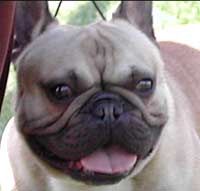
. Deve essere molto grossa, larga e squadrata. . La pelle che la ricopre forma pliche e rughe quasi simmetriche.
. Tartufo - Largo, molto corto, all'ins, con narici ben aperte e simmetriche, dirette obliquamente all'indietro.
Snout - Much, short wide one; it introduces concentriche, symmetrical pliche, that they come down on labbro advanced (the equal length to approximately 1/6 of that one of the skull).
. Labbra - Spesse, un po' rilassate e nere. The labbro advanced it is combined to the center with the labbro inferior so as to to hide the teeth completely, than they do not have to never be visible. . Il profilo del labbro superiore e' ben disceso e arrotondato. . Non si deve vedere mai la lingua a bocca chiusa.
. Mascelle - Larghe, squadrate, potenti. . La mascella inferiore descrive un'ampia curva che termina davanti alla mascella superiore cingendola. When the mouth e' sluice, the projection of the inferior jaw (prognatismo) e' moderated from the curving of the branches mandibolari.Questa curving necessary in order to avoid one excessive projection of the inferior jaw (dog with teeth discoveries). . Gli incisivi inferiori non devono mai essere dietro a quelli superiori (cane enognato). . L'arcata degli incisivi inferiori e' arrotondata. . Le mascelle non devono presentare deviazione laterale.
. Guance - I muscoli delle guance sono ben sviluppati ma non sporgenti.
. Stop - Profondo e accentuato.
. Cranio - Largo, quasi piatto, con fronte molto convessa. . Arcate sopraccigliari sporgenti, separate da un solco particolarmente sviluppato fra gli occhi. . Il solco non deve prolungarsi sulla fronte come nel Bulldog inglese.Cresta occipitale molto poco sviluppata.
. Occhi - Espressione sveglia. Placed low, enough far from the tartufo and above all from the orecchie, of dark color, enough large, very round, leggermente sporgenti, they do not leave to catch a glimpse no trace of white man (sclerotica) when the dog watches of se' straight. . Il bordo delle palpebre deve essere nero.
. Orecchie - Di grandezza media, larghe alla base e arrotondate all'estremit. . Attaccate alte sulla testa, ma non troppo vicine una all'altra, portate diritte. . Il padiglione aperto verso il davanti. . La pelle deve essere fine e morbida al tatto.
. Collo - Corto, leggermente incurvato, senza giogaia.
Front limbs
. Appiombi regolari visti dal davanti e di profilo.
. Spalle e braccia - Corti, spessi, hanno una muscolatura solida e visibile. . Il braccio deve essere corto, il gomito ben aderente al corpo.
. Avambracci - Corti, ben distanziati, rettilinei e muscolosi.
. Carpi e metacarpi - Solidi e corti.
. Piede - Rotondo, piccolo, detto 'piede da gatto', ben appoggiato al suolo, voltato leggermente in fuori. . Le dita sono compatte; le unghie corte, grosse e ben separate. . I cuscinetti plantari sono duri, spessi e neri. . Nei tigrati le unghie devono essere nere. . Nei bianco-tigrati, la preferenza andr alle unghie scure, senza per questo penalizzare le unghie chiare.
Log
. Petto - Leggermente aperto.
. Torace - Cilindrico e ben disceso, costole 'a botte' molto arrotondate.
. Dorso - Largo e muscoloso.
. Reni - Corte e forti. . La linea dorsale progressivamente rilevata a livello delle reni per scendere rapidamente verso la coda. . Questa forma, particolarmente ricercata, ha come causa la brevit delle reni.
. Ventri e fianchi - Rilevati, ma non levrettati.
Rump - Obliqua.Arti posterioriGli posterior limbs are strong and muscolosi, a p devout long of the front, cosi limbs that the posterior train turns out elevated. . Gli appiombi visti sia dal di dietro che di profilo sono regolari.
. Coscia - Muscolosa, solida, senza essere troppo arrotondata.
. Garretto - Abbastanza disceso, ne' troppo angolato n troppo diritto.
. Tarso e metatarso - Solidi e corti. . Il Bouledogue deve nascere senza speroni.
. Piede - Molto compatto. . Coda corta, attaccata bassa sulla groppa, attaccata ai glutei, spessa alla base, ritorta o naturalmente tronca, assottigliata all'estremita'. . Anche durante l'azione, deve restare sotto l'orizzontale. . La coda relativamente lunga (senza superare la punta del garretto), tronca e sottile, e' ammessa ma non ricercata.
Cape
. Deve essere formato da un bel pelo raso, compatto, lucido e morbido. . Ha due varieta': il tigrato e bianco-tigrato detto "caille". . Tigrato - Fulvo, da mediamente a fortemente tigrato, senza o con leggera screziatura.
. Il mantello tigrato caratterizzato dalla presenza sul fondo fulvo di striature trasversali nere, dette 'tigrature'. . Il Bouledogue tigrato presenta quindi un miscuglio di peli neri e rossicci non troppo scuri. . Questa categoria ammette la presenza del bianco, in modesta proporzione, sul petto e sulla testa. . II mantello tigrato con grosse macchie bianche, soprattutto sulla gualdrappa, e ammesso ma non desiderabile. . Non sono ammessi i mantelli con eccessiva percentuale di nero o con fulvo insufficientemente tigrato.
. Bianco e tigrato detto "caille" - Sono a fondo bianco con macchie tigrate. . I soggetti interamente bianchi rientrano in questa categoria. . Per entrambi, le ciglia e le palpebre devono essere nere. When a subject "caille" introduces tartufo a much dark one, dark eyes border you from entire dark eyelids, can exceptionally be tolerated some depigmentations to the snout. . II colore di fondo non deve essere troppo macchiettato. It too much does not have to be strict if some perceivable moschettatura e' on the white man of some capes "caille", even if the preference goes to that they introduce areas of a pure white man.
DEFECTS
. 1) Tartufo chiuso o stretto (da russatore cronico). . 2) Brutta dentatura. . 3) Occhi chiari. . 4) Giogaia. . 5) Gomiti non aderenti al corpo. . 6) Garretto diritto o spostato in avanti. . 7) Coda rialzata o troppo lunga o anormalmente corta. . 8) Mantello macchiettato o troppo nero o troppo chiaro. . 9) Pelo troppo lungo. . 10) Depigmentazione delle labbra. . 11) Andatura scorretta.
Serious defects
. 1) Denti visibili a bocca chiusa. . 2) Lingua visibile a bocca chiusa. . 3) Cane che 'batte il tamburo' (movimento rigido degli anteriori). . 4) Tracce di ladre al muso tranne che nei casi "caille" previsti dallo standard. . 5) Peso eccessivo o insufficiente.
. Squalifiche
. 1) Occhi eterocromi. . 2) Tartufo di colore diverse dal nero. . 3) Muso da lepre. . 4) Enognatismo. . 5) Prognatismo eccessivo con uno scarto di oltre 12 mm. . 6) Orecchie non portate diritte. . 7) Amputazione delle orecchie, della coda o degli speroni. . 8) Speroni ai posteriori. . 9) Mantello di colore nero, nero e focato, caffelatte, grigio topo, marrone, fulvo insufficientemente striato. . 10) Criptorchidismo sia semplice che bilaterale. . 11) Cane anuro.
. Nota: I maschi devono avere due testicoli di aspetto normale, ben scesi nello scroto.
